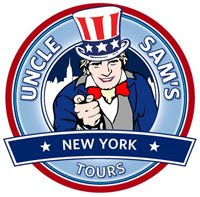The growth of the Garment Industry dates back to the 1800's where there was a transition of people making their own clothes to having them tailor-made. Factors that contributed to this transition include the efficiency of having clothes produced for slaves instead of by them, the invention of the sewing machine, the need for uniforms during the Civil War, and the arrival of immigrants with relevant business experience and skills. By 1880 New York produced more garments than its four closest urban competitors combined and in 1910, 70% of the nation's Women's clothing and 40% of the Men's was produced in the City.
 By the 1920's the United Hebrew Trades union hired Jewish and Italian Gangsters such as Lepke Buchalter as union enforcers, but got more than they bargained for. They used unions to demand payments from factory owners and threatened strikes while dipping into union bank accounts. This control transformed into a protection racket, expanding into such areas as bakery trucking. Shortly after Lepke Buchalter's death by the electric chair, Carlo Gambino turned the mob-influenced industry into an all out organized crime cartel. Life for the mob trucker couldn't get better through the early 90's, but everyone else was suffering.
By the 1920's the United Hebrew Trades union hired Jewish and Italian Gangsters such as Lepke Buchalter as union enforcers, but got more than they bargained for. They used unions to demand payments from factory owners and threatened strikes while dipping into union bank accounts. This control transformed into a protection racket, expanding into such areas as bakery trucking. Shortly after Lepke Buchalter's death by the electric chair, Carlo Gambino turned the mob-influenced industry into an all out organized crime cartel. Life for the mob trucker couldn't get better through the early 90's, but everyone else was suffering.From the mid-1950s until 1992, the garment business shrank 75 percent, and cost New York 225,000 jobs. Manufacturing has declined tremendously in New York City over the past two decades because of numerous factors such as lower outsourcing costs and excessive rents. Many of the showrooms and factories are being transformed into retail stores and condo apartments as we speak. Some of the industry's most famous designers, promising entrepreneurs, and fashion makers reside their business here including Oscar de la Renta, Calvin Klein, Donna Karan, Liz Clairborne, and Nicole Miller. The Garment industry still remains the fashion capital for designers, couture houses and showrooms despite the decline of manufacturing.
To preserve the rich history of the Garment district, a Fashion Walk of Fame on 7th Avenue has been set up and a sculpture of a sewing worker has been installed on the corner of 39th Street and 7th Avenue. Some think this is not enough and have joined the Save the Garment Center campaign. To learn more check out the official site here.
 Getter a better glimpse of the Garment district and learn more information about this neighborhood by taking the New York Up, Down, and Sideways tour offered Friday and Center.
Getter a better glimpse of the Garment district and learn more information about this neighborhood by taking the New York Up, Down, and Sideways tour offered Friday and Center.





No comments:
Post a Comment